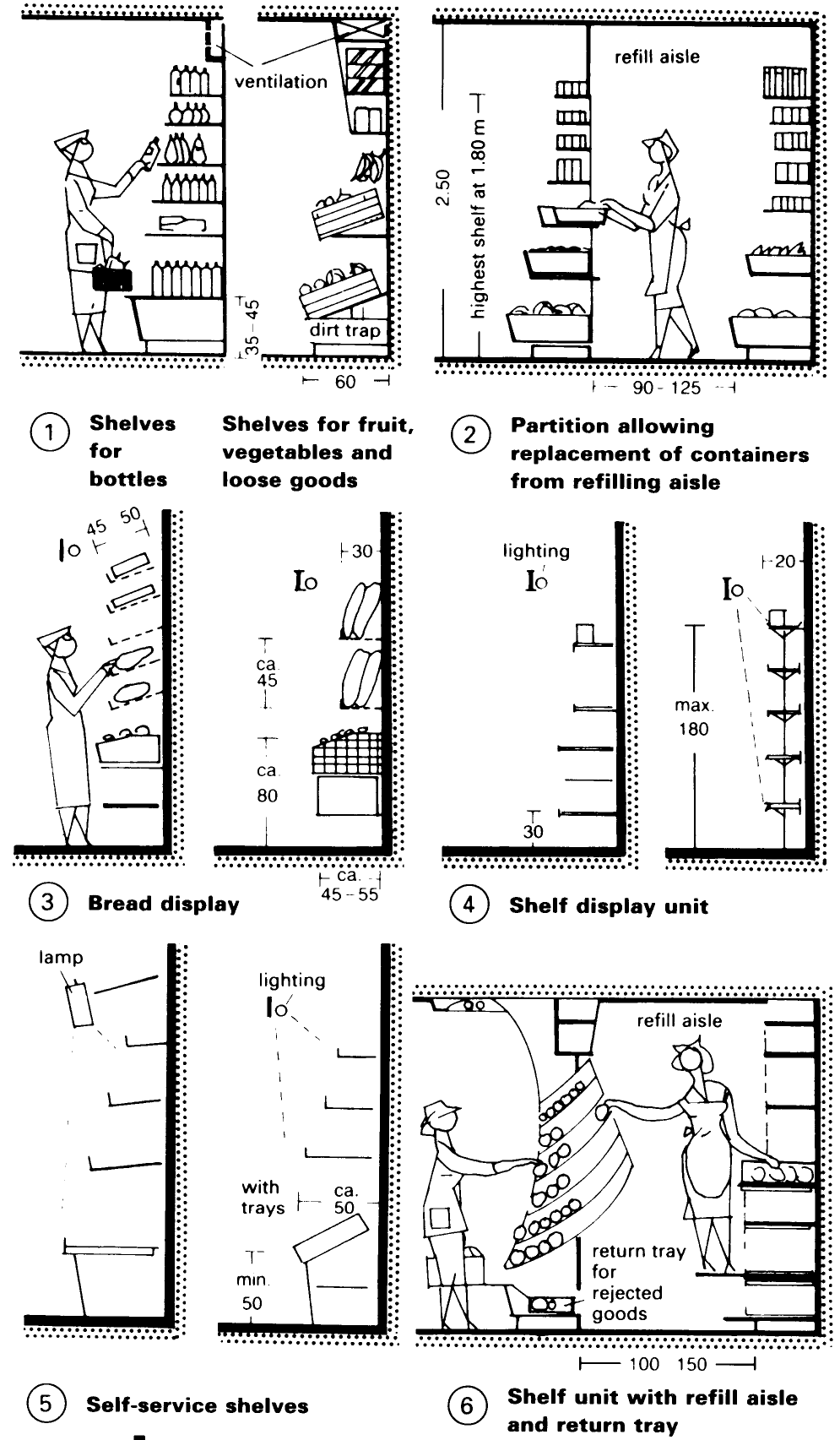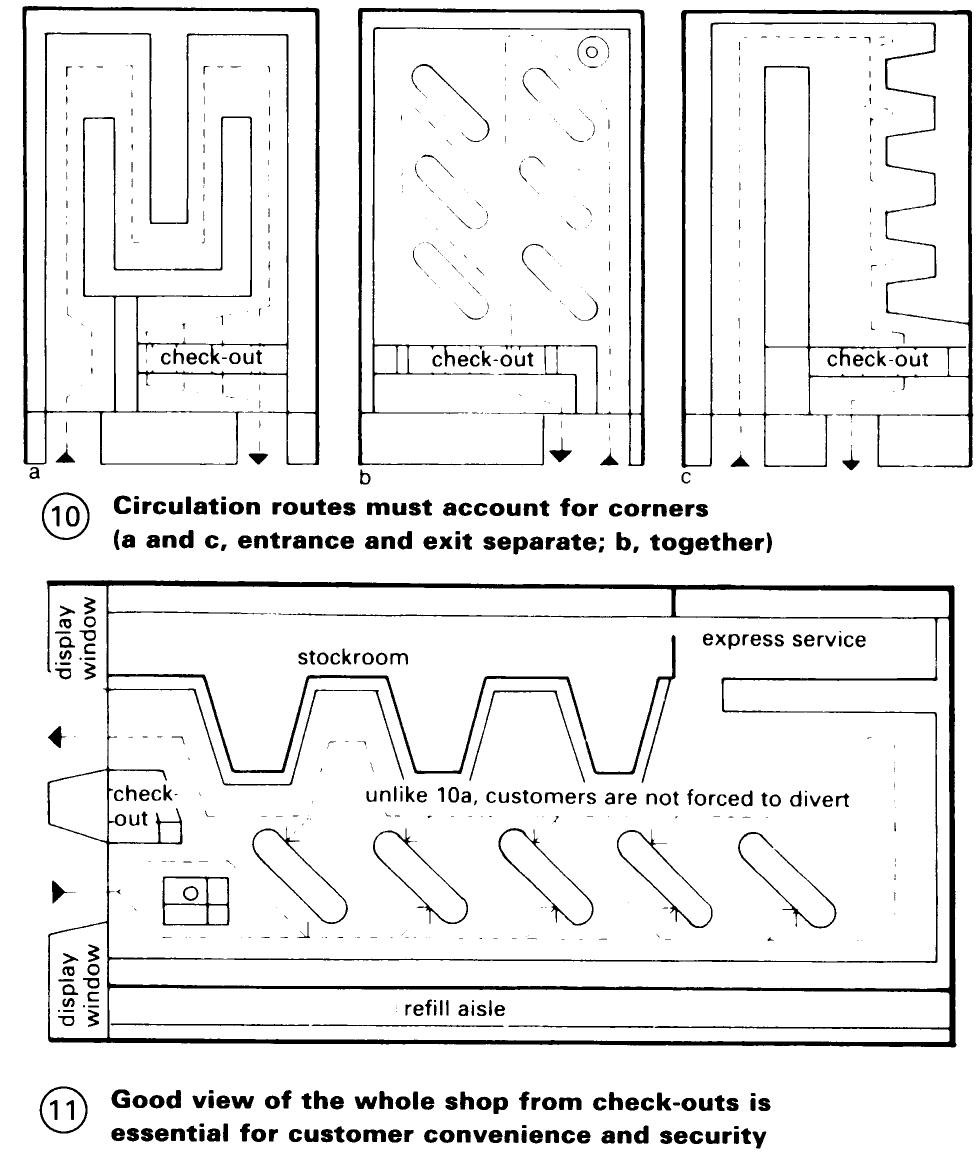Transparent Roofs and Canopies. Shops.
To make life more agreeable for city inhabitants and visitors, large transparent canopies are playing an increasing role in the architectural concepts of modern town planning. The transparent canopies not only protect against wind and weather, but also add decorative accents to the appearance of our cities. Transparent roofs improve the quality of life of city residents. They increase the quality of leisure time, for example, by protecting window shoppers on commercial streets and in pedestrian zones. Transparent roofs are also used for outdoor theatres, swimming pools, or sports facilities to provide shelter from inclement weather.

It is obviously essential that fire rescue services are still able reach the buildings, and that the micro-climate in the street, shops, restaurants and offices is not adversely affected. The following materials are used for transparent roofs:
- silicate glass panes/pyramids;
- acrylic glass domes;
- vaults made of acrylic glass or polycarbonate;
- intersecting skins containing synthetic fibres and the like;
- fire-resistant glass (-* pp. 130-31, 169, 173);
- curved glass (3-8mm; radii 50-230mm).
Shops. Shelf units in shops – (1) – (6) from which customers pick their own goods should be no higher than 1.8m and no lower than 0.3m above floor level.

Attention must be paid to circulation routes in larger shops (10) + (11). They should begin at the trolley/basket pick-up and end at the check-outs.

All shops require some provision for the handling of goods. These needs may vary from off-pavement deliveries for small units to the complex operations carried out by large retail businesses.
The walls, floors, counter tops and work surfaces in fishmongers, game and poultry shops and butchers must be washable. Suitable materials therefore include marble, ceramic tiles, glass and plastics.
Fish perishes quickly and so must be kept chilled. It also smells strongly so fishmongers' shops should be surrounded by air-locks or air-curtains. Note that smoked fish, unlike fresh fish, must be stored in dry conditions and provision must be made for this. The possibility of large bulk deliveries should be taken into consideration. There may also be a need for an aquarium to attract the eye. – (1) + (2).

Game and poultry shops are sometimes part of fish shops and often stock only one day's supply of goods. They require a separate work room with facilities for plucking and scraping. As poultry absorbs smells, it must be stored separately both in the cold room and shop. Large refrigerated compartments and display cases are needed. - (3) + (4).

Butchers' shops – (10) + (11) should preferably be on one level and have trucks on rails or castors to allow carcasses (which can weigh up to 200kg) to be moved easily. Work rooms and cold rooms should be one and a half to two times the size of the shop.

All fittings in cold stores must be adequately protected against corrosion, due to the high humidity level in these spaces.
The conflict in fishmongers' and butchers' shops between balancing the requirements of temperature for staff comfort (around 16°C) and the display of provisions (-2°C to 0°C), can be dealt with by using directional fan heaters, which blow warm air towards staff and away from food, radiant heaters placed high on the walls or under-floor heating.
In addition, adequate ventilation is required for the removal of smells. Fruit and vegetables need to be kept cool but not refrigerated. Potatoes should be kept in dark rooms. Sales are mostly from delivery containers (baskets, crates, boxes etc.) and dirt traps and refuse collectors should provided below storage racks. (7) + (8).

In general, the planning and design of greengrocers' shops should consider the requirements for delivery and unpacking of goods, washing, preparing, weighing, wrapping, waste collection and disposal. Flower shops can be combined with fruit and vegetable shops.
Food Courts. Food courts are large halls that house groups of small outlets selling a wide variety of specialist food products. Customers can either sit and eat on the premises or take the food away. With attractive displays and a market-style environment, food courts offer a pleasant shopping environment and can be added to supermarkets beyond the check-outs – (1).

The produce is predominantly fresh or cooked on the premises so storage space for one day's trade is adequate. Deliveries are usually made early in the morning.
A typical food court might include a bakery, a butcher, cafes and bars, a delicatessen snack bar, an ice-cream parlour plus shops and counters selling sea food, fruit, vegetables, flowers, beers and wines, pizza, wholefood, local specialities etc.
Date added: 2023-01-05; views: 610;
